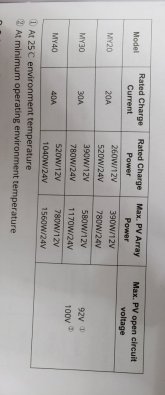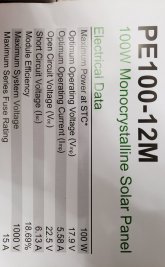I recently purchased a 500w, 5 100w mono panel kit with an MPPT 40a charge controller.
Panels are currently wired, 5 parallel, yielding the highest current under ideal conditions but low voltage in cloudy skys
I am noticing, after 3 weeks of testing before making a permanent installation, the dark days of winter in Oregon takes it toll on solar charging.
Someone on this forum mentioned that it is "too bad" I have and odd number of panels (5). If it were even, then i could have either 2 paralleled sets of 2 wired in series (using only 4 panels), or I could get one more panel and have 3 paralleled sets of 2 wired in series for a bit more current (using 6 panels).
On the clouded days, the charge controller doesn't see enough voltage from the panels to start charging. So, it just sits there.
Who here has the experience to speak to this tech issue with understanding and experience?
Panels are currently wired, 5 parallel, yielding the highest current under ideal conditions but low voltage in cloudy skys
I am noticing, after 3 weeks of testing before making a permanent installation, the dark days of winter in Oregon takes it toll on solar charging.
Someone on this forum mentioned that it is "too bad" I have and odd number of panels (5). If it were even, then i could have either 2 paralleled sets of 2 wired in series (using only 4 panels), or I could get one more panel and have 3 paralleled sets of 2 wired in series for a bit more current (using 6 panels).
On the clouded days, the charge controller doesn't see enough voltage from the panels to start charging. So, it just sits there.
Who here has the experience to speak to this tech issue with understanding and experience?





